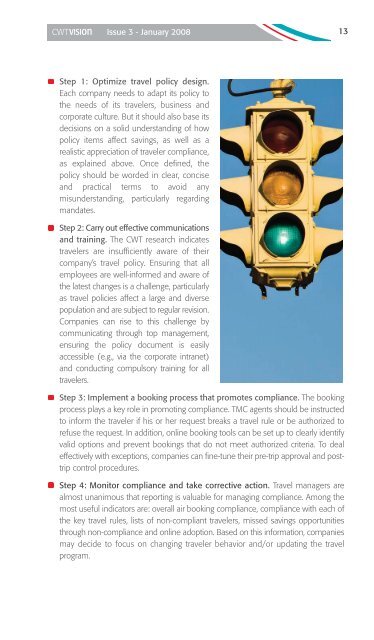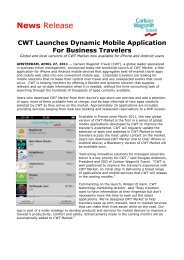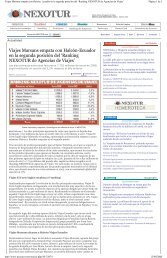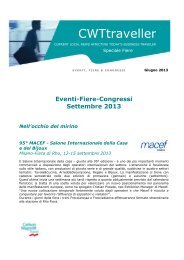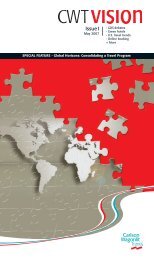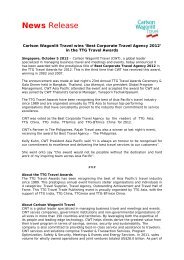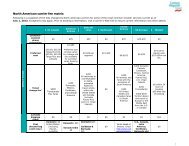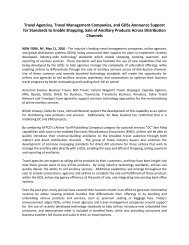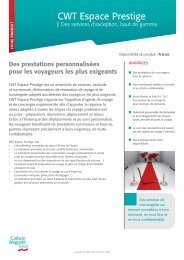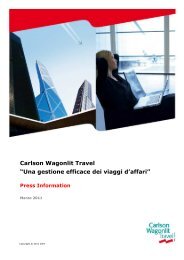Getting With the Program - Carlson Wagonlit Travel
Getting With the Program - Carlson Wagonlit Travel
Getting With the Program - Carlson Wagonlit Travel
You also want an ePaper? Increase the reach of your titles
YUMPU automatically turns print PDFs into web optimized ePapers that Google loves.
CWTvIsIon Issue 3 - January 200813Step 1: Optimize travel policy design.Each company needs to adapt its policy to<strong>the</strong> needs of its travelers, business andcorporate culture. But it should also base itsdecisions on a solid understanding of howpolicy items affect savings, as well as arealistic appreciation of traveler compliance,as explained above. Once defined, <strong>the</strong>policy should be worded in clear, conciseand practical terms to avoid anymisunderstanding, particularly regardingmandates.Step 2: Carry out effective communicationsand training. The CWT research indicatestravelers are insufficiently aware of <strong>the</strong>ircompany’s travel policy. Ensuring that allemployees are well-informed and aware of<strong>the</strong> latest changes is a challenge, particularlyas travel policies affect a large and diversepopulation and are subject to regular revision.Companies can rise to this challenge bycommunicating through top management,ensuring <strong>the</strong> policy document is easilyaccessible (e.g., via <strong>the</strong> corporate intranet)and conducting compulsory training for alltravelers.Step 3: Implement a booking process that promotes compliance. The bookingprocess plays a key role in promoting compliance. TMC agents should be instructedto inform <strong>the</strong> traveler if his or her request breaks a travel rule or be authorized torefuse <strong>the</strong> request. In addition, online booking tools can be set up to clearly identifyvalid options and prevent bookings that do not meet authorized criteria. To dealeffectively with exceptions, companies can fine-tune <strong>the</strong>ir pre-trip approval and posttripcontrol procedures.Step 4: Monitor compliance and take corrective action. <strong>Travel</strong> managers arealmost unanimous that reporting is valuable for managing compliance. Among <strong>the</strong>most useful indicators are: overall air booking compliance, compliance with each of<strong>the</strong> key travel rules, lists of non-compliant travelers, missed savings opportunitiesthrough non-compliance and online adoption. Based on this information, companiesmay decide to focus on changing traveler behavior and/or updating <strong>the</strong> travelprogram.


